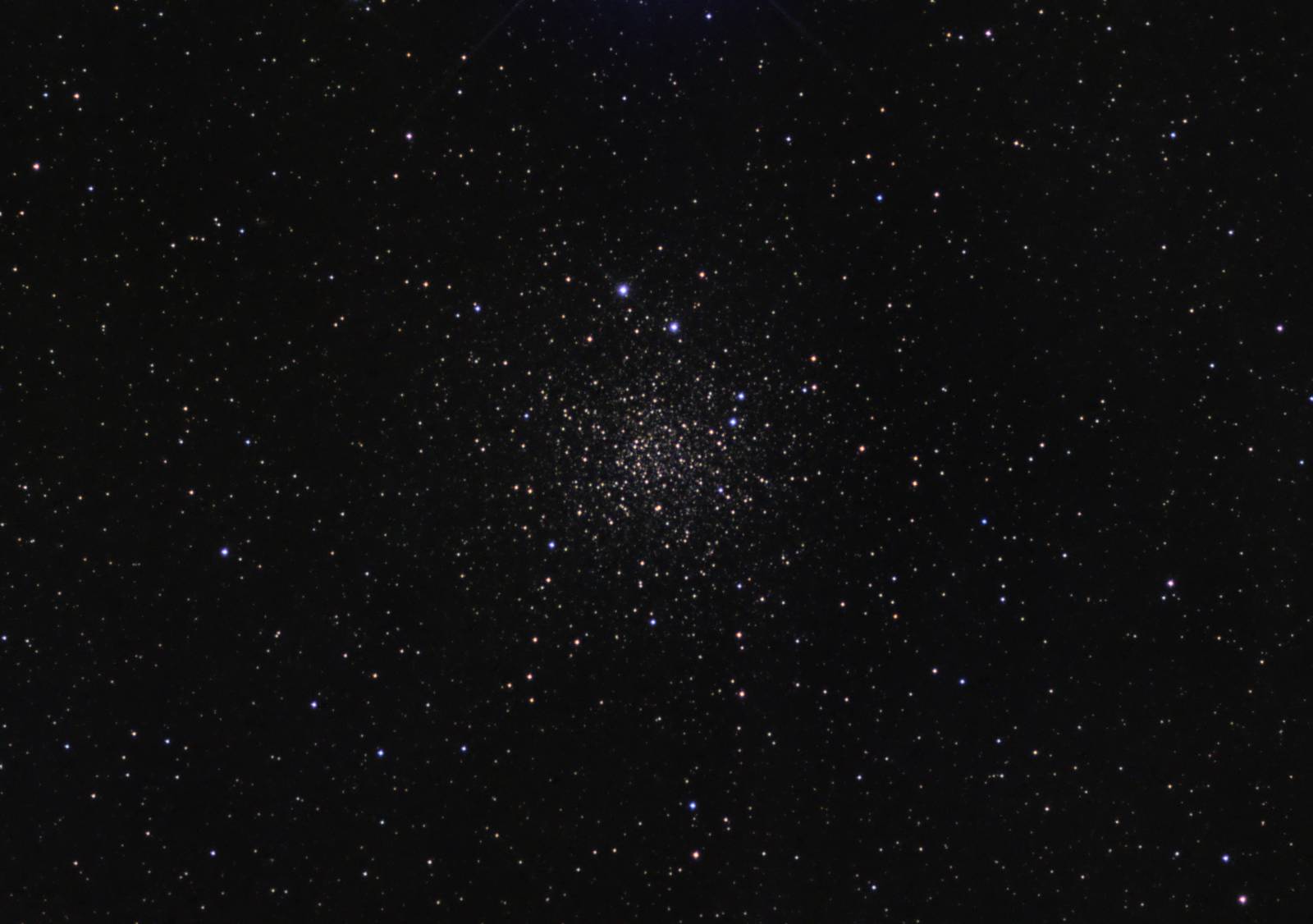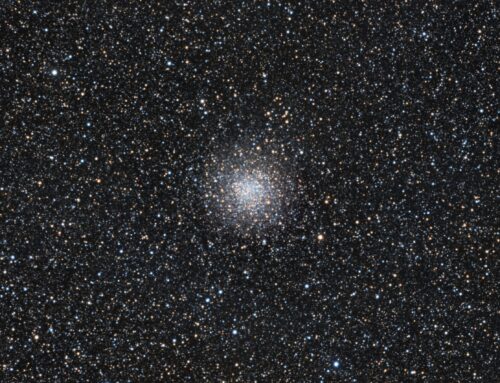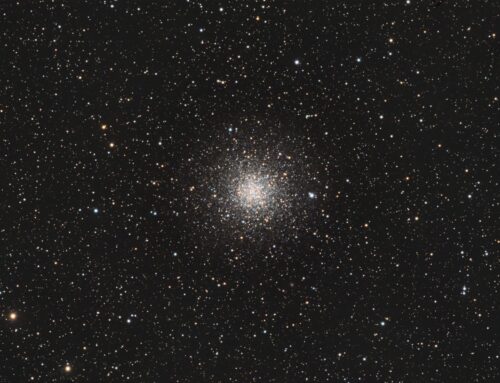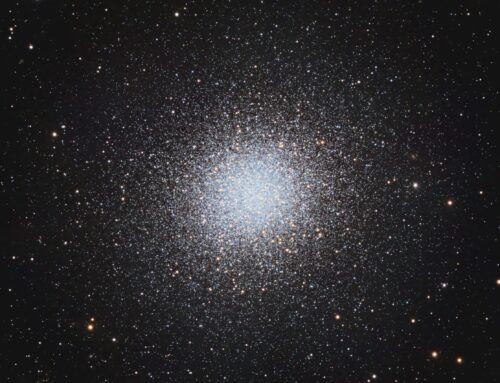NGC6366 Globular Cluster
Click image for full size version
February 6, 2017
More than 150 globular clusters orbit the Milky Way’s core. Each is a more-or-less spherical grouping of hundreds of thousands of stars tightly held together by gravity. Some, like M13 are big, bright, tightly packed and spectacular. Others… not so much.
NGC6366 is usually overlooked amongst the many globular clusters of Ophiuchus, like M10, M12 and M14.. It is so sparse that it barely looks like a globular cluster at all. It is small and dim, covering only as much sky as 1/4 of the full moon.
In spite of its lacklustre appearance, there are some facts that make it interesting: it is a “metal rich” cluster, meaning its stars have relatively large amounts of elements heavier than hydrogen and helium. It contains relatively few low mass stars; one theory is that the lower mass stars have been stripped away by the main portion of the Milky Way galaxy through “tidal stripping.”
This object was imaged in the nights right around full moon in June, 2014, possibly in the worst imaging conditions I’ve ever encountered: turbulence, humidity, wind, intermittent cloud, intense moonlight, bad light pollution in my southern sky — this image has got it all. My article on imaging in moonlight describes some of the strategies I use under these conditions.
A previous version was published in the September 2015 Astronomy Magazine. The current version shows many more stars, better colour and a larger extent of the object. It represents recent improvements in my image processing workflow.
Tekkies:
SBIG STL-11000M camera, Baader LRGB filters, 10″ f/6.8 ASA astrograph, Paramount MX. Guided with STL-11000′s remote guide head using 80 mm f/6 refractor. Focusing with FocusMax. Acquisition, guiding and calibration with Maxim DL. Registration, integration and processing in PixInsight. Shot from my SkyShed in Guelph, Ontario. Gibbous moon. Very good transparency and poor seeing throughout.
7x10m R, 6x10m G, 5x10m B, 5x15m L , all unbinned frames (total=4hr15m).
RGB
Creation and cleanup: L, R, G and B masters were cropped and processed separately with DBE. R, G and B were combined to make an RGB image which was processed with ColorCalibration.
Linear Noise Reduction: MultiscaleLinearTransform was used to reduce noise in the background areas. A Linear mask and the following Layer settings for threshold and strength were used: Layer 1: 3.0, 0.75 Layer 2: 2.5, 0.62 Layer 3: 2.0, 0.5 Layer 4: 0.5, 0.2, Layer 5: 0.5, 0.1.
Stretching: HistogramTransformation was applied to make a pleasing yet bright image. During stretching, it was noted that the colours were not properly balanced for the background, so this was adjusted manually using sliders for the individual colour channels, as well as the RGB/K slider.
Synthetic Luminance:
Creation and cleanup of SynthL: The cleaned up L, R, G and B masters were combined using the ImageIntegration tool (average, additive with scaling, noise evaluation, iterative K-sigma / biweight midvariance, no pixel rejection).
Linear Noise Reduction: MultiscaleLinearTransform was used to reduce noise in the background areas. A Linear mask and the following Layer settings for threshold and strength were used: Layer 1: 3.0, 0.75 Layer 2: 2.5, 0.62 Layer 3: 2.0, 0.5 Layer 4: 0.5, 0.2, Layer 5: 0.5, 0.1.
Stretching: HistogramTransformation was applied to make a pleasing yet bright image.
Nonlinear Noise Reduction: TGVDenoise was applied and the image was re-stretched to reset the black point.
Combining SynthL with RGB:
The luminance channel of the RGB image was applied with LRGBCombine to make a SynthLRGB image. Colour noise reduction was used at default settings
Final Processing of SynthLRGB:
Background and star brightness, contrast and saturation were adjusted in several iterations using Curves with masks as required.
Image scale is about 1.1 arc sec per pixel.







Leave A Comment